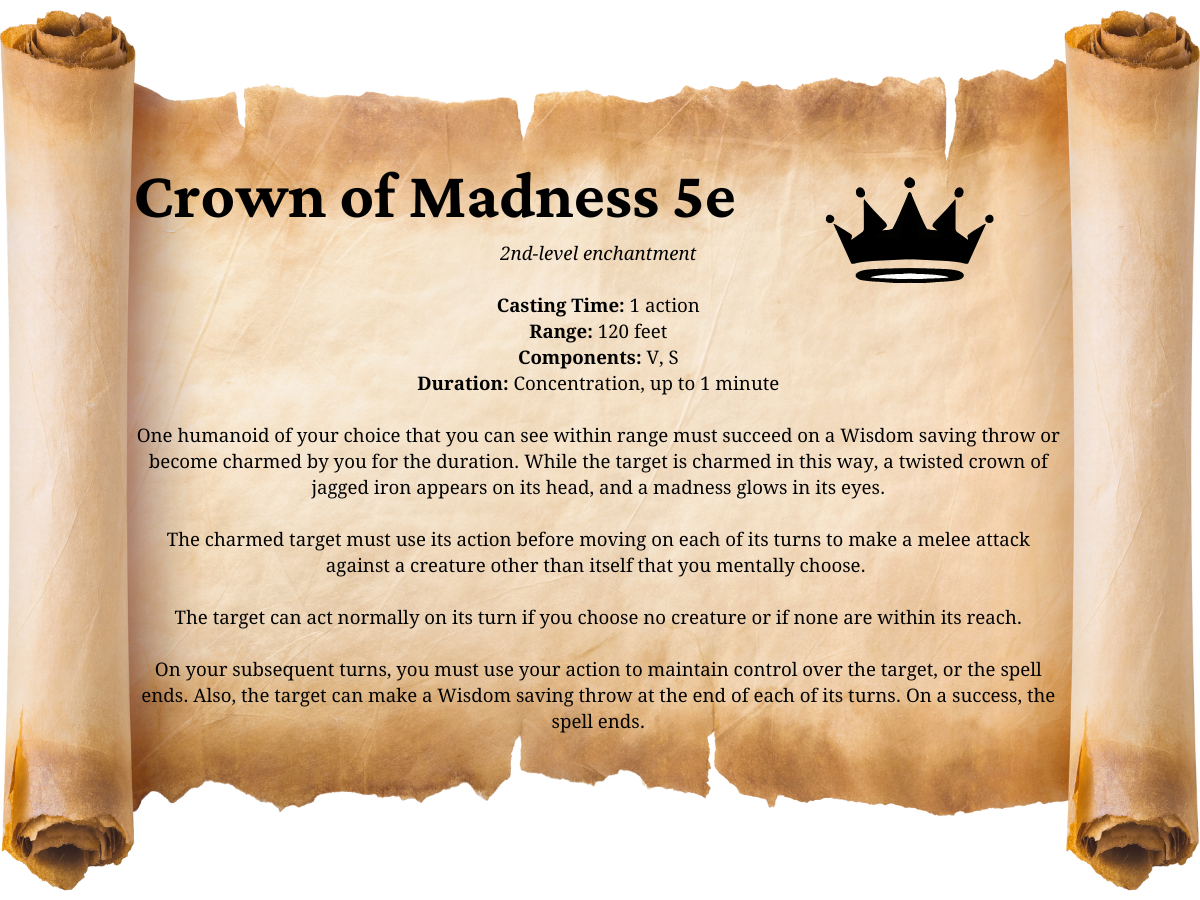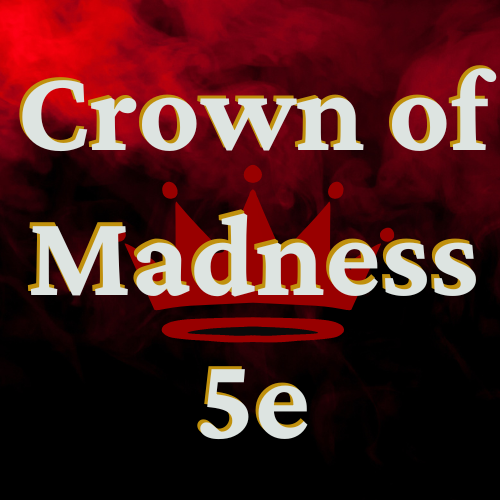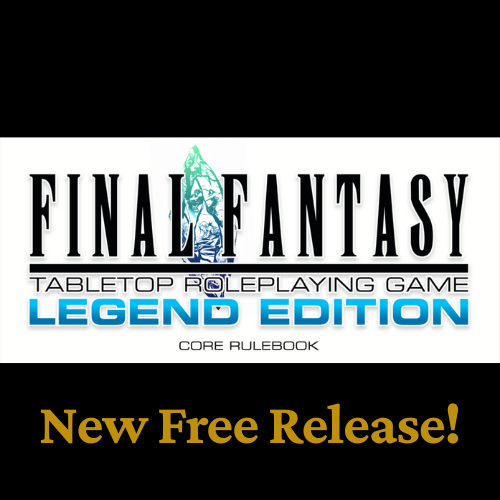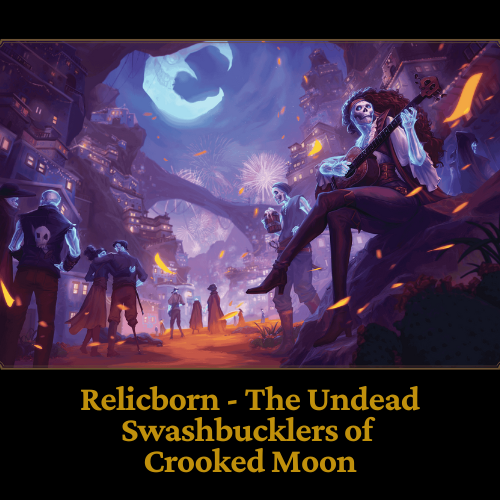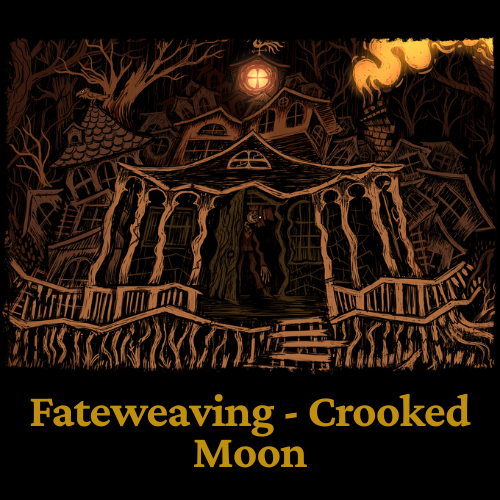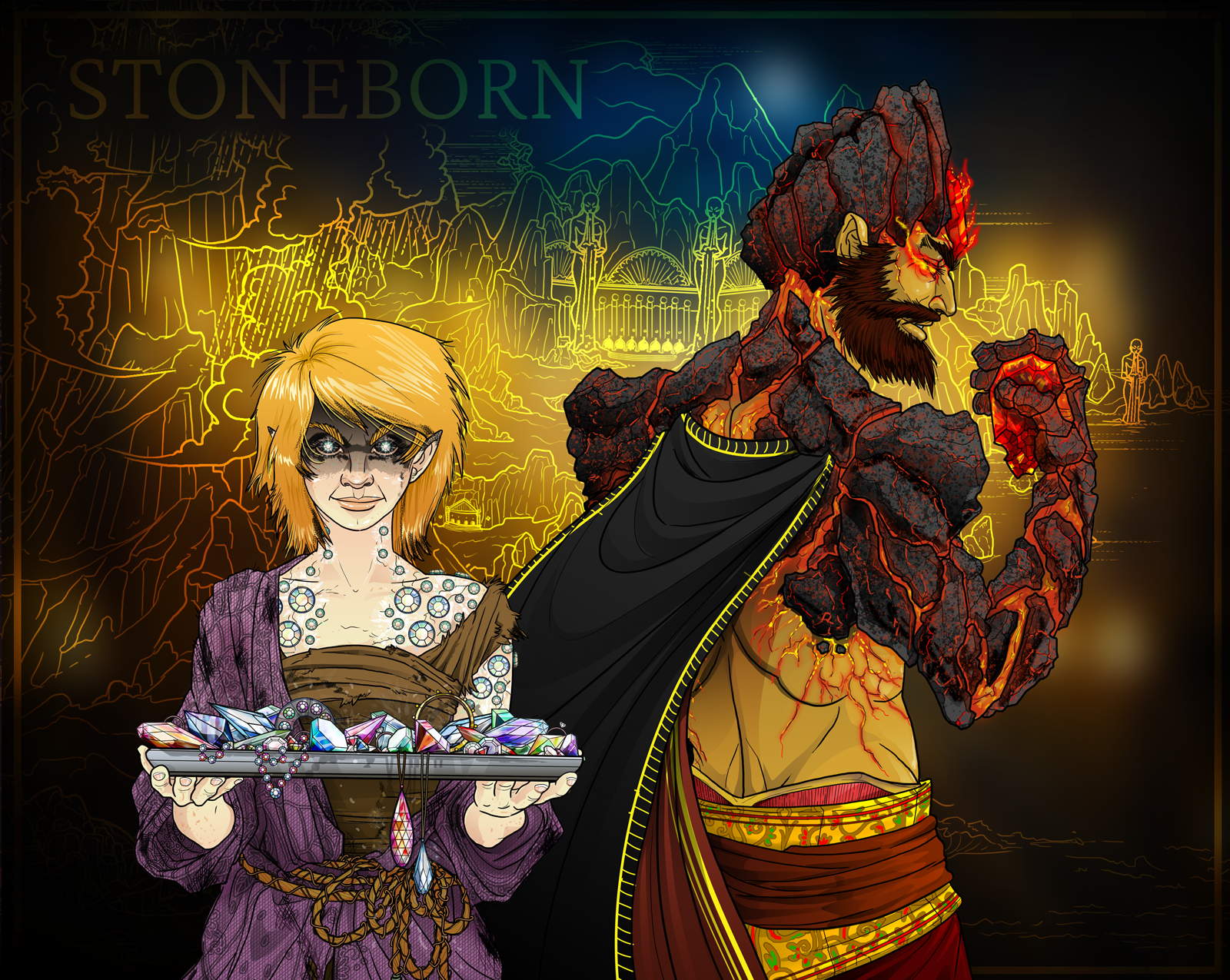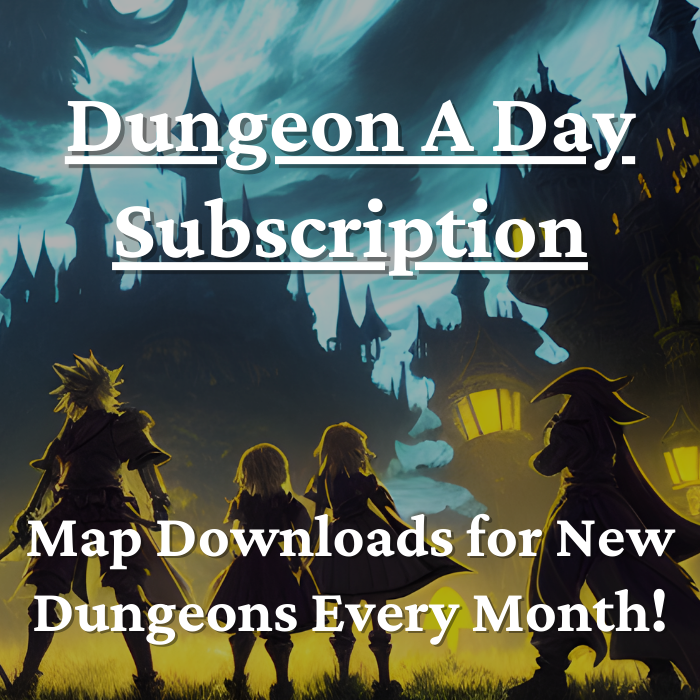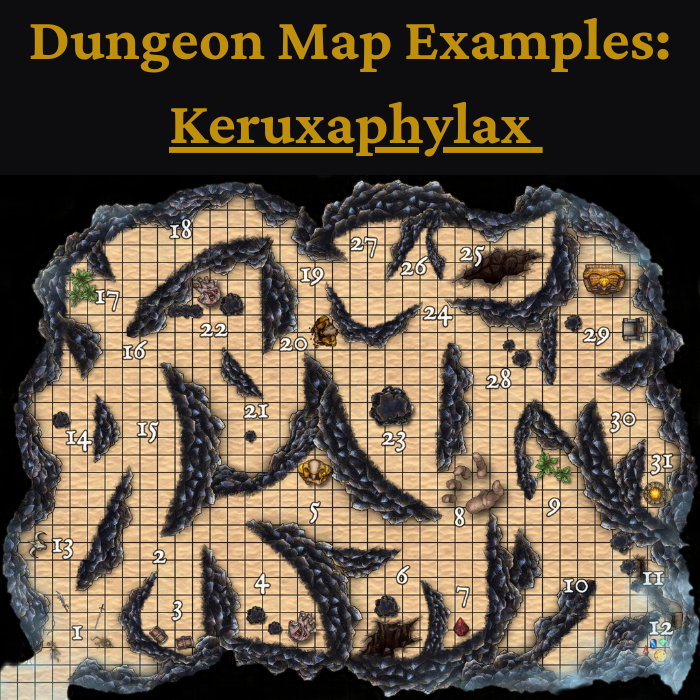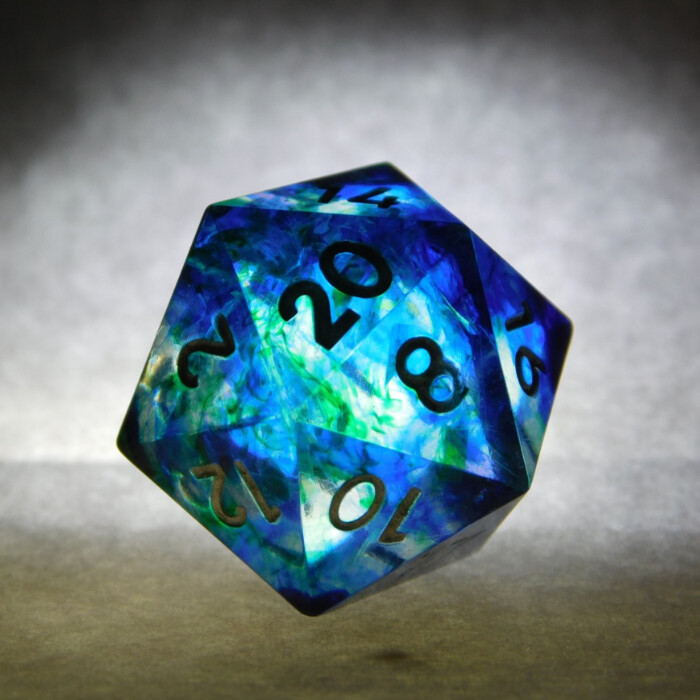Crown of Madness 5e Image
Crown of Madness 5e Spell Effects
2nd-level enchantment
Casting Time:
1 action
Range:
120 feet
Components:
V, S
Duration:
Concentration, up to 1 minute
One humanoid of your choice that you can see within range must succeed on a Wisdom saving throw or become charmed by you for the duration. While the target is charmed in this way, a twisted crown of jagged iron appears on its head, and a madness glows in its eyes.
The charmed target must use its action before moving on each of its turns to make a melee attack against a creature other than itself that you mentally choose.
The target can act normally on its turn if you choose no creature or if none are within its reach.
On your subsequent turns, you must use your action to maintain control over the target, or the spell ends. Also, the target can make a Wisdom saving throw at the end of each of its turns. On a success, the spell ends.
All information about Crown of Madness 5e comes from the
DnD Player's Handbook.
Classes That Can Cast Crown of Madness 5e
The following classes gain access to casting Acid Splash 5e as part of their normal class spell availability:
- Bard
- Sorcerer
- Warlock
- Wizard
Crown of Madness Spell Effectiveness
Table Values
In the table above, "DPR" indicates
damage per round, in this case, not accounting for hit chance. The numbers provided are very rough calculations of the average damage a fighter might do, per round. The fighter class is used as an example for the spell effectiveness of crown of madness because ideally, you would charm a powerful melee unit with the spell. Furthermore, the "Total Value" column in the table shows the value of not only not being attacked by a charmed fighter, but of them attacking an ally - so, double the effect, by target level.
Crown of Madness Usefulness
Crown of Madness 5e is such a cool spell because it's a charm effect that actually allows you to take over your charmed target's actions, and cause them to attack their own allies. Though crown of madness has some drawbacks, it also has terrific potential. Use crown of madness 5e in the following situations to make the most from the spell.
- Cast crown of madness 5e against enemies with low Wisdom saving scores, to maximize your chances of succeeding with the spell.
- Prioritize crown of madness 5e on enemies who deal a ton of melee damage, since your charmed effect only allows for you to have the target melee attack. The more damage the target does with melee attacks, the more you should prioritize casting this spell.
- For the love of god, make sure that when you cast crown of madness on a target that there is another enemy within 5-feet of your target. If you stop attacking with your target at the start of their round, your target gets to act normally on that turn. Though this situation doesn't end the spell altogether, it does make it very likely that you won't get anything out of it at all as the target can simply run away from their own allies.
- Since crown of madness requires concentration to maintain its effect, make sure that you're far away from enemies who can attack you. If possible, cast the spell from the full 120-foot range, away.
- Make sure that you don't have any other super high-priority spells that you need to cast or actions that you need to take because maintaining this effect requires an action each round.
-
-
Sold Out
![Dungeon A Day Subscription]()
![Dungeon A Day Subscription]()
-
-
-
Sold Out
![Dungeon A Day Subscription]()
![Dungeon A Day Subscription]()
-
Combine Crown of Madness with the Following Spells
There are some spells such as
burning hands or
call lightning that, since they can target multiple units, or in other cases, get a sort of multiplying effect, they can become almost game-breaking. Crown of Madness certainly fits into the "potentially game-breaking" category, as you can not only prevent a powerful enemy from attacking you, but you can even turn that same enemy against their own allies.
Before casting Crown of Madness, in order to maximize its potential multiplying effect, try setting up the combat encounter by mixing in some of the following spells:
- Bane: though I typically don't consider bane to be a very powerful spell, when combined with crown of madness 5e, it certainly can be. Since bane lowers the targets' saving throws by 1d4, it's a must-have for maintaining the charmed effect on crown of madness victims.
- Banishment: have an ally cast banishment so that you keep more enemies away from attacking you. Alternatively, have an ally cast
cause fear on any enemies getting too close to you for comfort.
- Cloud of Daggers: normally, I also view cloud of daggers as a pretty suboptimal spell, but if the map features a choke point, consider casting this spell as a way of preventing other creatures from attacking you. Since crown of madness 5e requires concentration, you must do everything possible to avoid being hit.
- Color Spray: if you can blind targets with this spell or even
Blindness/ Deafness, you can give enemies disadvantage on their attack rolls, which ultimately helps you keep concentration for crown of madness.
- Haste: using this spell (which an ally would need to maintain on you since you can't concentrate on a second spell), you can gain +2AC and double your movement speed. Combine this spell with
mage armor and you can significantly increase your AC, and keep moving away from any enemies who might break your crown of madness 5e concentration.
Crown of Madness 5e Counters
The easiest ways for your crown of madness run to end are when an enemy
silences you, bolsters their affected ally's Wisdom saving throw with
Bless, or deals damage to you to break your concentration. When it comes to damaging spells, something like cloud of daggers, which automatically hits, is especially troublesome, so be wary of effects of that nature by keeping your distance and knowing what your enemies are capable of casting.
Crown of Madness-Type Spells in Eternity TTRPG
Effects where you control another character's actions, or generally go berserk and sometimes attack allies, are some of my favorite in any
TTRPG. I've included a couple examples of crown of madness 5e-type spells below, from the
Eternity TTRPG Game System.
Revenant - Core Class Spell
Wicked Heart (Magic):
weapon Range, -3Strike Bonus vs. Resilience or 4Range, -3Faith vs. Resilience, if this spell hits, take control of the target’s Action for 1turn.
When you take control, you may not
have the target use a critical, use a spell or ability with a 1Day Recharge, or dispel any of their own maintained effects. However, you may have them take any other action (including attacking themselves), and you may know the target’s HP, Wisdom, and all other stats and maintained effects for the duration of the control.
If you hit the target with “Spellbound”
while they are affected by “Wicked Heart,” you may instead have them use a Critical.
(Double-Hit): also deals 1damage.
- If this Spell hits, it also deals 1damage and you gain either +6Strike Bonus or +6Faith for 1turn.
- If this Spell hits, the target also has either -6Strike Bonus or -6Faith, at your choice.
- Up to 3 enemies in Weapon Range -3Strike Bonus vs. Resilience or up to 3 enemies in 4Range, -3Faith vs. Resilience. *Double-Hit with this critical only allows one of the attacks to control for an additional turn.
Revenant - Core Class Spell
Wicked Heart (Magic):
weapon Range, -3Strike Bonus vs. Resilience or 4Range, -3Faith vs. Resilience, if this spell hits, take control of the target’s Action for 1turn.
When you take control, you may not have the target use a critical, use a spell or ability with a
1Day Recharge, or dispel any of their own maintained effects. However, you may have them take any other action (including attacking themselves), and you may know the target’s HP, Wisdom, and all other stats and maintained effects for the duration of the control.
If you hit the target with “Spellbound” while they are affected by “Wicked Heart,” you may
instead have them use a Critical.
(Double-Hit): also deals 1damage.
- If this Spell hits, it also deals 1damage and you gain either +6Strike Bonus or +6Faith for 1turn.
- If this Spell hits, the target also has either -6Strike Bonus or -6Faith, at your choice.
- Up to 3 enemies in Weapon Range -3Strike Bonus vs. Resilience or up to 3 enemies in 4Range, -3Faith vs. Resilience. *Double-Hit with this critical only allows one of the attacks to control for an additional turn.
Revenant - Core Class Spell
Wicked Heart (Magic):
weapon Range, -3Strike Bonus vs. Resilience or 4Range, -3Faith vs. Resilience, if this spell hits, take control of the target’s Action for 1turn.
When you take control, you may not have the target use a critical, use a spell or ability with a 1Day Recharge, or dispel
any of their own maintained effects. However, you may have them take any other action (including attacking themselves), and you may know the target’s HP, Wisdom, and all other stats and maintained effects for the duration of the control.
If you hit the target with “Spellbound” while they are affected by “Wicked Heart,” you may instead have them use a
Critical.
(Double-Hit): also deals 1damage.
- If this Spell hits, it also deals 1damage and you gain either +6Strike Bonus or +6Faith for 1turn.
- If this Spell hits, the target also has either -6Strike Bonus or -6Faith, at your choice.
- Up to 3 enemies in Weapon Range -3Strike Bonus vs. Resilience or up to 3 enemies in 4Range, -3Faith vs. Resilience. *Double-Hit with this critical only allows one of the attacks to control for an additional turn.
Alchemist - Core Class Ability
Crour Formula: you create an “item” that you or other characters can use.
When used, 4Range, the target deals an
additional +1damage when they hit with physical attacks (non-magic) that deal damage, and they also gain +2Resilience, +2Dodge, and +2Will. Each affected target can only deal additional damage from this ability once per turn.
The target must also roll d20 every
turn. If they roll 1-5, they go berserk for that turn and must do everything possible to kill their nearest ally (not including the use of criticals). If no allies are present when the target goes berserk, they must attempt to damage themselves.
Summoned units cannot benefit from
“Crour Formula’s” effect. You can make a number of “Crour Formulas” per day equal to your Intelligence value.
- You infuse the “Crour Formula” so that the target only goes berserk on rolls of 1-4.
- You infuse the “Crour Formula” so that when your user drinks it, they also gain immunity to all damage and negative effects the next time they are attacked. This effect also Fatigues the target, giving -1Resilience, -1Dodge, and -1Will for 1Day Duration (can stack without limit). This critical does not count as contributing “Crour Formula” for using “Chimaera.”
- You can instead choose to continually maintain this critical for 3Intelligence (and 0Wisdom), making it an Instant Action use on yourself at the start of every battle.
Whereas "Wicked Heart" is almost exactly the same as crown of madness 5e, except that it provides more flexibility for its use, "Crour Formula" actually enhances your own allies' strength, while also making them a liability. Both effects have quite a bit of nuance to them, and many more options when you choose to Critical with them, but they are definitely within the spirit of crown of madness, and make for wildly entertaining spells.
Curious to learn more about the Eternity TTRPG Game System? Check out the
Eternity TTRPG Core Game PDF!
Alchemist - Core Class Ability
Crour Formula: you create an “item” that you or other characters can use.
When used, 4Range, the target deals an additional +1damage when they hit with physical
attacks (non-magic) that deal damage, and they also gain +2Resilience, +2Dodge, and +2Will. Each affected target can only deal additional damage from this ability once per turn.
The target must also roll d20 every turn. If they roll 1-5, they go berserk for that turn and
must do everything possible to kill their nearest ally (not including the use of criticals). If no allies are present when the target goes berserk, they must attempt to damage themselves.
Summoned units cannot benefit from “Crour Formula’s” effect. You can make a number of
“Crour Formulas” per day equal to your Intelligence value.
- You infuse the “Crour Formula” so that the target only goes berserk on rolls of 1-4.
- You infuse the “Crour Formula” so that when your user drinks it, they also gain immunity to all damage and negative effects the next time they are attacked. This effect also Fatigues the target, giving -1Resilience, -1Dodge, and -1Will for 1Day Duration (can stack without limit). This critical does not count as contributing “Crour Formula” for using “Chimaera.”
- You can instead choose to continually maintain this critical for 3Intelligence (and 0Wisdom), making it an Instant Action use on yourself at the start of every battle.
Whereas "Wicked Heart" is almost exactly the same as crown of madness 5e, except that it provides more flexibility for its use, "Crour Formula" actually enhances your own allies' strength, while also making them a liability. Both effects have quite a bit of nuance to them, and many more options when you choose to Critical with them, but they are definitely within the spirit of crown of madness, and make for wildly entertaining spells.
Curious to learn more about the Eternity TTRPG Game System? Check out the
Eternity TTRPG Core Game PDF!
Alchemist - Core Class Ability
Crour Formula: you create an “item” that you or other characters can use.
When used, 4Range, the target deals an additional +1damage when they hit with physical attacks (non-magic) that deal
damage, and they also gain +2Resilience, +2Dodge, and +2Will. Each affected target can only deal additional damage from this ability once per turn.
The target must also roll d20 every turn. If they roll 1-5, they go berserk for that turn and must do everything possible to
kill their nearest ally (not including the use of criticals). If no allies are present when the target goes berserk, they must attempt to damage themselves.
Summoned units cannot benefit from “Crour Formula’s” effect. You can make a number of “Crour Formulas” per day
equal to your Intelligence value.
- You infuse the “Crour Formula” so that the target only goes berserk on rolls of 1-4.
- You infuse the “Crour Formula” so that when your user drinks it, they also gain immunity to all damage and negative effects the next time they are attacked. This effect also Fatigues the target, giving -1Resilience, -1Dodge, and -1Will for 1Day Duration (can stack without limit). This critical does not count as contributing “Crour Formula” for using “Chimaera.”
- You can instead choose to continually maintain this critical for 3Intelligence (and 0Wisdom), making it an Instant Action use on yourself at the start of every battle.
Whereas "Wicked Heart" is almost exactly the same as crown of madness 5e, except that it provides more flexibility for its use, "Crour Formula" actually enhances your own allies' strength, while also making them a liability. Both effects have quite a bit of nuance to them, and many more options when you choose to Critical with them, but they are definitely within the spirit of crown of madness, and make for wildly entertaining spells.
Curious to learn more about the Eternity TTRPG Game System? Check out the
Eternity TTRPG Core Game PDF!
